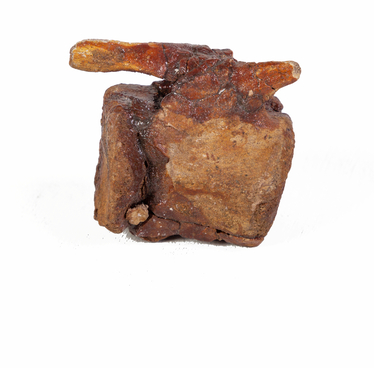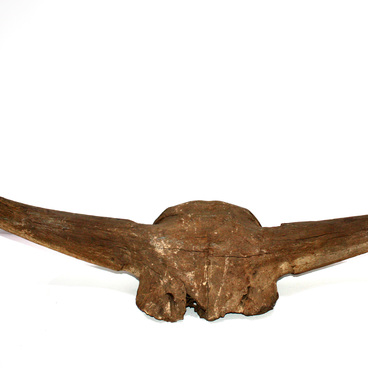The woolly rhinoceros is a famous extinct member of the rhinoceros family that lived in Europe and Northern Asia. This giant lived next door to the mammoths in the tundra steppe 300-10 thousand years ago, ate plant food, thus digging it out with its large horn from under the snow in the winter.
The woolly rhinoceros looked like an ordinary member of its family. But a sharp look can immediately notice the differences, such as shorter legs, as well as significantly elongated body and head. The back of the rhinoceros’s head turned into a hump where the fat needed in times of famine was stored. An important feature of the woolly rhinoceros was the absence of incisors and canines. Other teeth were in comparison with the teeth of modern rhinos more powerful, high, and with thickened enamel. It is quite remarkable that the teeth of the woolly rhinoceros, like other closely related species of the genus, had an open internal cavity.
Both males and females had two horns. Unlike the horns of modern rhinos, both were flattened from the sides. The first one was long up to 1.4 meters. Its weight reached up to 15 kg. The second horn was smaller, up to half a meter. The number of intact and well-preserved horns in museum collections is quite small compared to the exhibits of other parts of the rhinoceros body.
Woolly rhinoceros was not a frequent object of hunting. People tried to avoid it. And not for nothing, since it was enough to strike one blow to kill the hunter. Rock carvings of woolly rhinoceroses are known, but woolly rhinoceros bones are almost never found at ancient sites, unlike mammoth bones. Either the meat was tasteless, or the beast was very ferocious.
Skulls and bones of woolly rhinoceroses are among the most frequent paleontological finds in the North of Eurasia, especially in Siberia. For a long time, they were attributed to a variety of mythical animals. Only by the end of the 18th century, there was a scientific description of this most Northern rhinoceros. The German anthropologist Johann Blumenbach gave it the name “ancient rhinoceros”.
The woolly rhinoceros looked like an ordinary member of its family. But a sharp look can immediately notice the differences, such as shorter legs, as well as significantly elongated body and head. The back of the rhinoceros’s head turned into a hump where the fat needed in times of famine was stored. An important feature of the woolly rhinoceros was the absence of incisors and canines. Other teeth were in comparison with the teeth of modern rhinos more powerful, high, and with thickened enamel. It is quite remarkable that the teeth of the woolly rhinoceros, like other closely related species of the genus, had an open internal cavity.
As the name suggests, this rhinoceros was covered in fur. Judging by the few samples with preserved hair, it was reddish-brown in color, sometimes with a yellowish tinge. Under the coarse covering hair was a thin, thick undercoat. On the withers and neck, there was a kind of mane of long and coarse hair, and the limbs were covered with shorter hair. The tail reached a length of 40-45 cm ending in a brush.
Both males and females had two horns. Unlike the horns of modern rhinos, both were flattened from the sides. The first one was long up to 1.4 meters. Its weight reached up to 15 kg. The second horn was smaller, up to half a meter. The number of intact and well-preserved horns in museum collections is quite small compared to the exhibits of other parts of the rhinoceros body.
Woolly rhinoceros was not a frequent object of hunting. People tried to avoid it. And not for nothing, since it was enough to strike one blow to kill the hunter. Rock carvings of woolly rhinoceroses are known, but woolly rhinoceros bones are almost never found at ancient sites, unlike mammoth bones. Either the meat was tasteless, or the beast was very ferocious.
Skulls and bones of woolly rhinoceroses are among the most frequent paleontological finds in the North of Eurasia, especially in Siberia. For a long time, they were attributed to a variety of mythical animals. Only by the end of the 18th century, there was a scientific description of this most Northern rhinoceros. The German anthropologist Johann Blumenbach gave it the name “ancient rhinoceros”.



